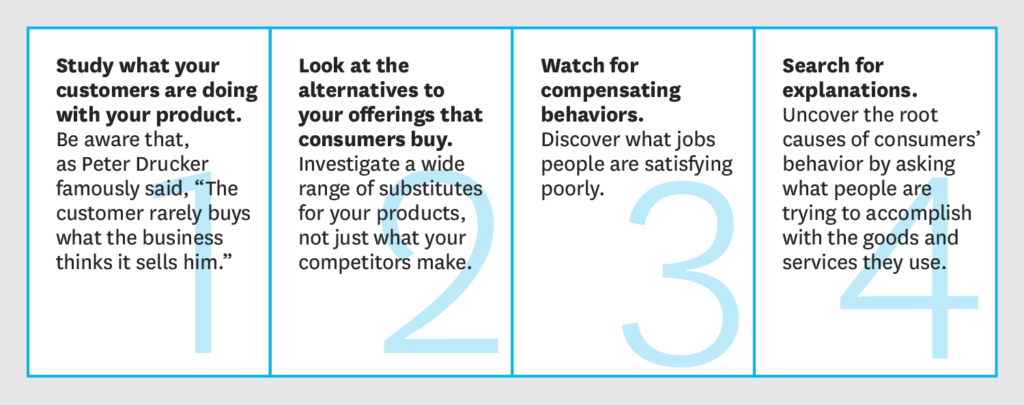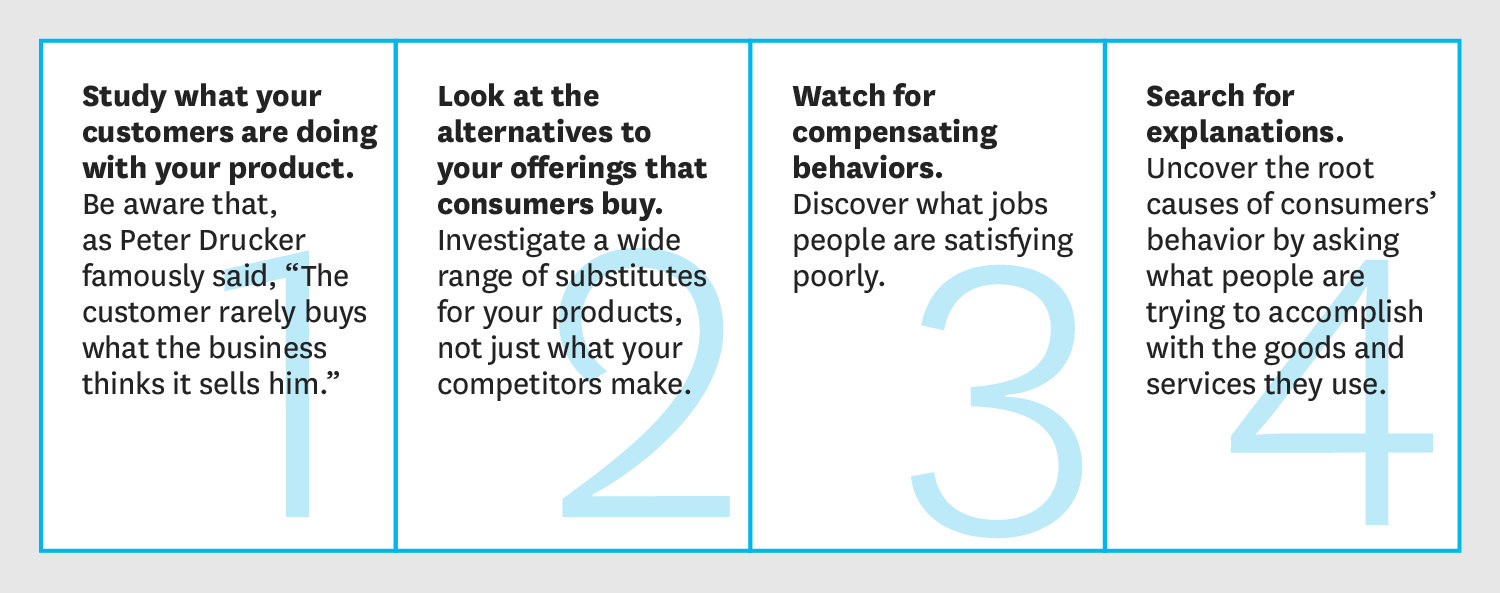There are four ways to uncover unmet customer needs: study customers using your product, look at substitutes, watch how people compensate when they can’t do a job with existing products, and understand the root causes of behavior.
Modern technology to predict, to have theories that are causal to ‘why people buy’ impacts all four steps in dramatic ways. It changes the priority of what you do and what you do first.

Uncovering the unmet needs of customers has changed. We’re in an environment where studying what your customers are doing with your product might not be informative – at all.
How to solve it:
You have to use look-ahead data – understand what drives your customers via their personality traits, behaviors and emotions. That will have more insight today because there’s too much nonconsumption.
Part one works only if you have stability. We don’t.
It’s best to realize you’re going to have to study customer’s needs based on their traits and what they’re likely to do not what they’re actually doing. You can’t just incorporate item one alone anymore.
I recently heard a story that a series of stores opened and the people that came back are at the low end of the desired market. Their tool – raise prices. This may work but it’s like taking a sledgehammer to a nail. You are likely the disenfranchise your core customer while removing what you don’t want. It’s a clear case of lacking intelligence about a new environment but only relying on old tools to solve the problem. Study what your customers are doing with your product is not the answer that’s going to give reliable insights right now.
Part 2, look at the alternatives to your offering. My research uncovers the share of wallet and what is distracting your customers – this is something that can be done now. This can be uncovered in hours. What are the alternatives to consumer buying and while this has changed it can be quantified now?
Part 3, one way to uncover this is to see where people drop off but combine it with their personality. Are they not coming back and what are their personality traits versus those that are desirable and returning. Look at compensating behavior based on language psychology and personality traits to figure out the product.
Part 4 — no! I’m a big believer in not affecting the experiment. I think it’s best to create A HYPOTHESIS of what customers are trying to accomplish before you try to affect the experiment.
Sometimes if your questions are not right (at this stage), you will get misleading information that creates more problems than it solves. The psychology of the customer can be understood and can be incorporated into item four. Predict first, then start testing.
The idea here is to focus on what people want. Don’t tell them, figure it out without impacting or affecting the experiment.
Focus on marketing by improving your marketing and selling language. Certain verbs and word usage can connect or dissuade a customer based on their traits. Using the science of language psychology, you can better predict what will work.
Focus media buying and marketing language using the psychology of the buyer
Focus on product features that are prized by your best customer
Build out 1 to 1 look-alike audiences using psychology
Create ‘share of wallet’ data. Do you know what your customers are spending money on beside your product? You can compare this data – good customers vs. bad customers.
I’ve use this to build seven companies that collectively have grown into many many of dollars of revenue. The biggest was a company we sold to Google and the most important one is a company doing national security work in space. In between, the journey has been fascinating – people are diverse in their needs and how they express it If you listen to the right signals you can scale a company. It is key to customer centricity and it works.
You can think of this as a focus engine, where are you are quantifying things that otherwise never get a metric assigned. You also drop things that no longer make sense because you have data on people that rivals what Google has but never gives.
The original work was published by Harvard Business review in 2011, by Matthew Eyring, Mark W. Johnson, and Hari Nair.

